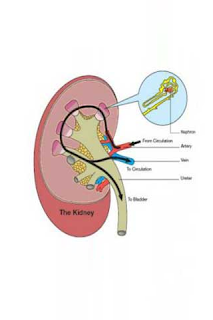Common Symptoms of Spinal Stenosis; Its diagnosis and treatment
The symptoms of spinal stenosis are caused by a compression or an abnormal narrowing of the spinal canal. This is an uncharacteristic change of the canal which can cause a lot of discomforts, even severe pain, as well as other symptoms that should be given immediate medical attention.Generally, spinal stenosis has two common types, lumbar stenosis and cervical stenosis, and a lot of the symptoms can be found in both types of stenosis. Lumbar stenosis is a more common affliction, while cervical stenosis is the more hazardous one, as it involves a compression of the spinal cord in a very critical part of the body being the neck region.
The symptoms of lumbar stenosis include:
· Radiating numbness, weakness or tingling in one or both legs.
· Loss of balance leading to frequent falling or difficulty to walk.
· Neurogenic claudication or foot and leg pain resulting from certain postures.
· Sciatica pain associated with a tingling pain or numbness caused by irritation of the sciatic nerve.
· A severe case of spinal stenosis can affect the nerves to the bladder or bowel leading to incontinence.
Cervical stenosis symptoms include:
· Numbness, weakness, pain or cramping in the arms.
· Pain in the shoulders, back, arms and neck.
· Where cervical spinal stenosis involves some pressure on the spinal cord, signs may also include pain, numbness and weakness in the legs and feet.
· Bowel and bladder symptoms.
Diagnosis and treatment
The diagnosis typically starts with a complete history and physical exam. Discuss your symptoms in detail with your doctor. The physical examination and the symptoms the patient is experiencing will help a doctor assess the severity of the condition and which specific treatment should be used.However, diagnosing spinal stenosis in a patient can sometimes be difficult. Most of the symptoms, if not all, common to this condition are also prevalent in other common health problems. This is when medical imaging studies for patients become indispensable. After a physical examination; your doctor will likely want to order some tests to determine the cause of your symptoms. Imaging tests, such as X-rays, MRI scans, and CT scans can provide detailed pictures of your spine.
There is no cure for spinal stenosis, but there are treatments to relieve Spinal stenosis symptoms. Over-the-counter anti-inflammatory medications can ease swelling and pain. If they don’t do the trick, your doctor can prescribe higher-dose medication. Your doctor may also recommend cortisone injections. This anti-inflammatory drug is injected directly into the area of the spinal stenosis. Cortisone can significantly ease inflammation and pain. Its effects may be temporary, however, and you shouldn’t have more than three injections in a single year. Pharmaceutical treatment is typically tried first. The goal is to relieve your pain. Cortisone injections into your spinal column can reduce swelling. Nonsteroidal anti-inflammatory drugs (NSAIDs) can also help with pain. Physical therapy may also be an option. It can strengthen muscles and gently stretch your body.

Comments
Post a Comment